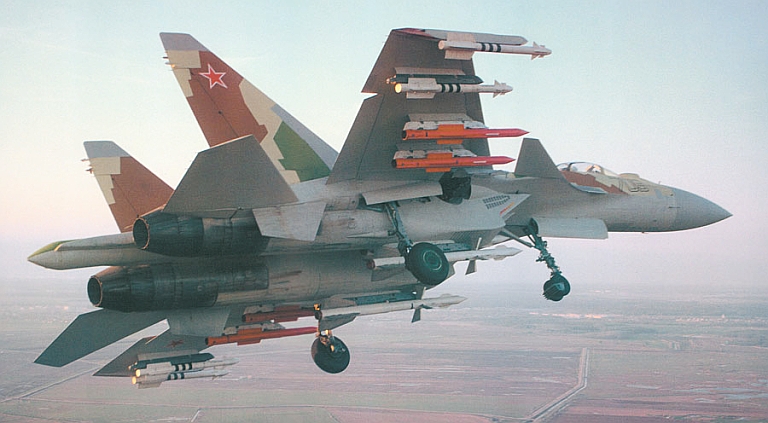U.S. interests in India's Defense needs is way up
On 10–13 April, US Defense Secretary Ashton Carter paid his third visit in just 30 months to India — the seventh by a US Defense Secretary since 2008. The frequency of high-level visits reflects the prominence accorded to New Delhi within the Pentagon’s emerging strategy towards the Indo-Asia-Pacific region.
In New Delhi, Secretary Carter and his counterpart, Manohar Parrikar, laid the penultimate touches to a series of defence cooperation, technology sharing, and research and co-production related agreements which — when finalised — will fundamentally, albeit incrementally, transform the nature of India–US maritime engagement in the Indian Ocean region.
An agreement to share logistics during peacetime will enable the two navies to mitigate capability gaps in the Indian Ocean, which has seen a progressive swelling in operational commitments. It will also breathe life into the India–US Maritime Cooperation Framework agreement, which had envisaged ‘an appropriate agreement on logistics support’ 10 years after it was signed.
The understanding to share aircraft carrier catapult-launch technology and design capabilities will enable the two navies to operate a complementary set of deck-based platforms, including P-8I patrol aircraft, E-2D Hawkeye early warning aircraft and, if an agreement on co-production is reached, F/A-18E/F Super Hornet fighters. This will enable the two navies, in time, to operate separately but synergistically with one another across the Indian Ocean.
India and the United States have also commenced upgraded maritime dialogues, including on anti-submarine operations, at the official 2+2 and officer-to-officer level. This will enable New Delhi to both remedy its under-preparedness in the area of anti-submarine sonars as well as to deter the entry of Chinese navy nuclear attack submarines into the Bay of Bengal. US-sourced advanced communications gear will facilitate seamless and secure ship-to-shore and platform-to-platform intelligence sharing during the Navy’s day-to-day operations. In time, it could also open the door for greater interoperability with the US Navy in the Eastern Indian Ocean.
By the time the dust settles on this phase of cooperation, it is likely that the Indian Navy and the US Pacific Fleet will individually operate a set of network-centric intelligence, surveillance and reconnaissance assets that allow a common information picture about the Eastern Indian Ocean to be formed and exchanged. This could potentially provide a basis for cooperative responses to possible threats.
Credit for the renewal of maritime defence ties resides at both ends. The immediate catalyst for stepping up engagement was the Modi government’s willingness to re-evaluate three foundational defence agreements of the Bush era on logistics, encrypted communications and geo-spatial mapping. Of even greater consequence has been India’s openness to jettisoning its long-standing reluctance to be associated with extra-regional strategy in its Indian Ocean zone of primary interest.
For his part, Carter deserves credit for his perseverance in working through the fundamental alignment–autonomy contradiction that afflicts US–India strategic ties. He has effectively worked to tease out a common middle ground that combines New Delhi’s desire to boost its autonomous capabilities through defence technology-sharing with Washington’s yearning for navy-to-navy interoperability in the Indo-Asia-Pacific region.
In doing so, he has also overruled his own earlier conception of the role of India as a potential host for US ‘over-the-horizon’ bases and as a participant in US-led ‘coalition-of-the-willing’ conventional missions.
Yet the burgeoning US–India defence partnership needs to be kept in perspective.
Its geographic writ is unlikely to extend beyond the sea lines of communication and strategic approaches of the Eastern Indian Ocean and southern Bay of Bengal, except during emergency disaster relief missions.
From a functional standpoint, military-grade intelligence sharing and federated defence planning, including joint threat assessment and amphibious operations cooperation, remains off the table. Most of the smaller-scale ‘pathfinder’ defence technology cooperation projects, particularly those that are outside the main maritime sphere or that would entail private-to-private technology transfers, are likely to wither on the vine.
A sense of proportion must also inform the understanding of China’s strategic role in the Indian Ocean.
The eastern Indian Ocean will remain a decidedly distant ‘far seas’ theatre of operation for the Chinese navy for some time yet. Its South Sea Fleet surface task group conducted its first, and only, training deployment there in 2014. China also has limited, though vital, interests in the region. These interests, including free access and unimpeded navigation, align with India’s own interests east of the Strait of Malacca, meaning they can be effectively managed through diplomatic avenues.
In February, India and China inaugurated, and institutionalised, a mid-level Maritime Affairs Dialogue that will allow both sides to broach these and other related issues of common interest. Later this year, China, India and Russia will also hold a first-ever, stand-alone ministerial-level consultation on the security architecture in the Asia-Pacific region.
US–India defence cooperation has for too long lagged behind its potential, owing in part to a tendency on both sides to view defence cooperation initiatives through a lens of entrapment.
The tempered expectations but dependable delivery in the new US–India defence partnership might well come to be marked as the moment when the two parties settled for a more productive, though modest, engagement that translated their mutual strategic visions into practical cooperation in the Indian Ocean and the Asia-Pacific region.
http://www.indiandefensenews.in/2016/05/us-interest-in-indias-defense-needs-is.html















